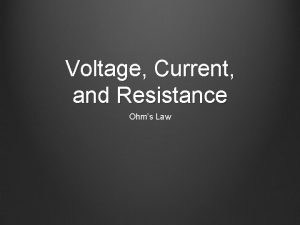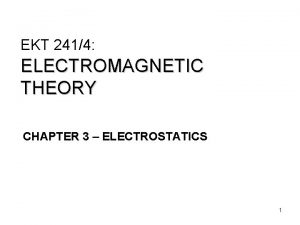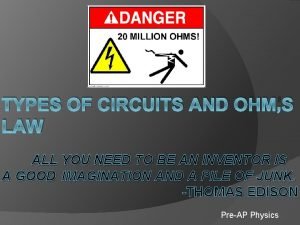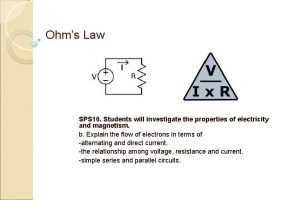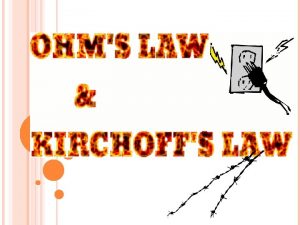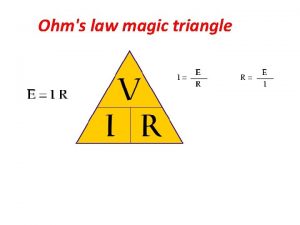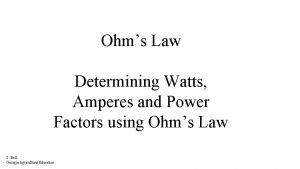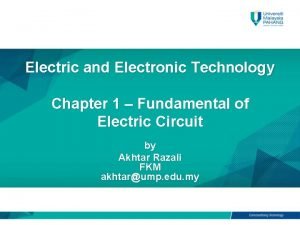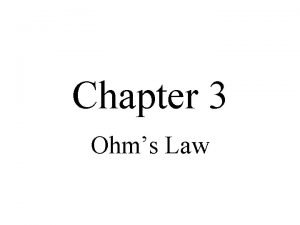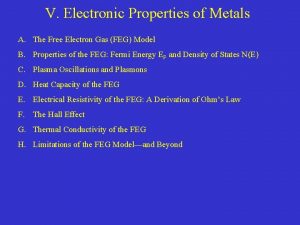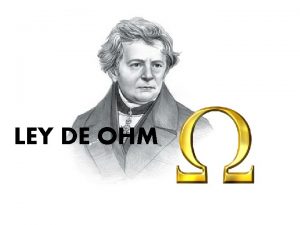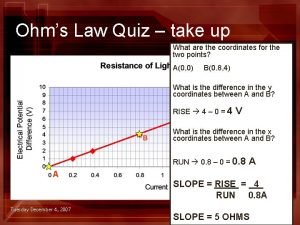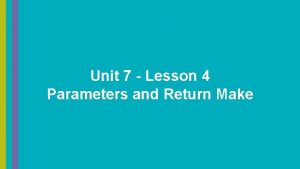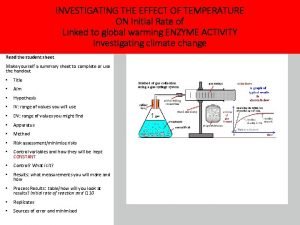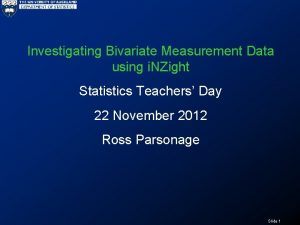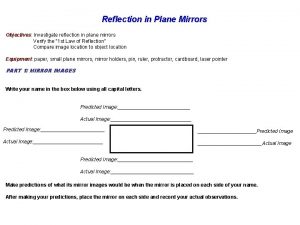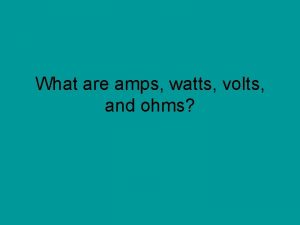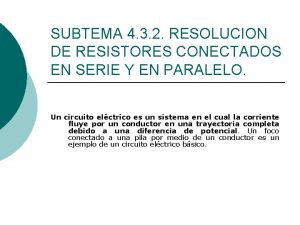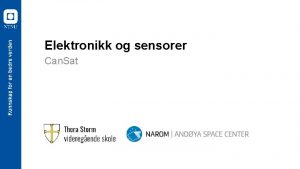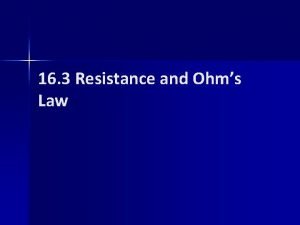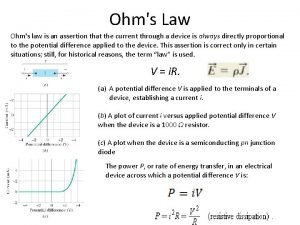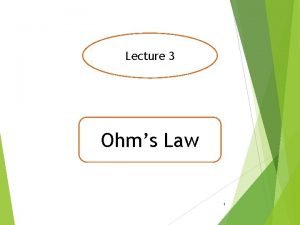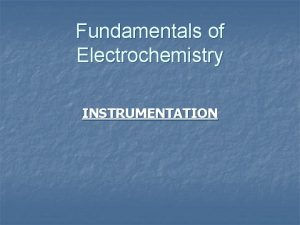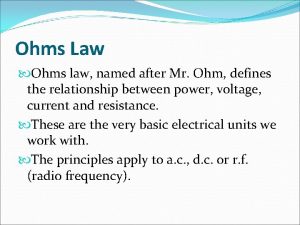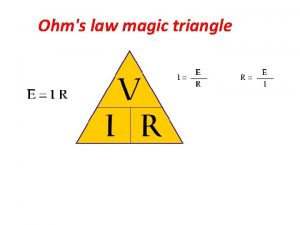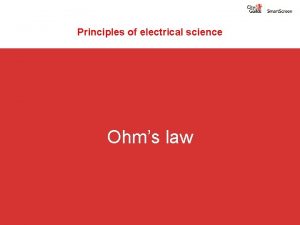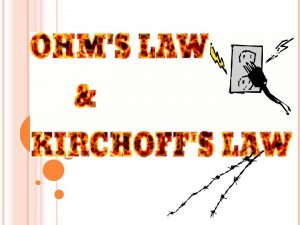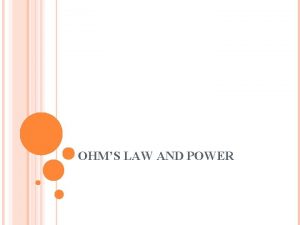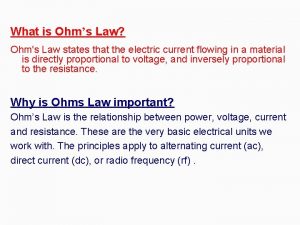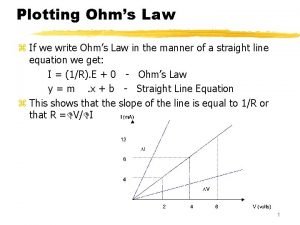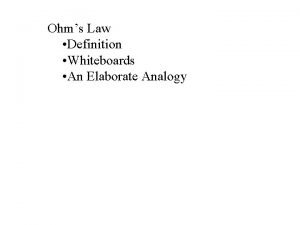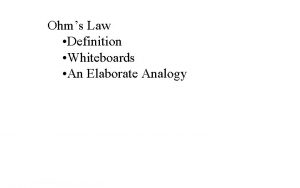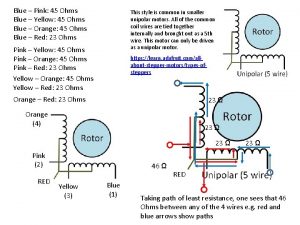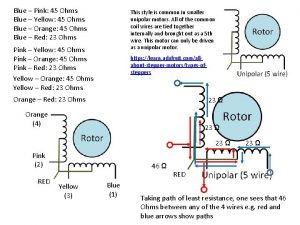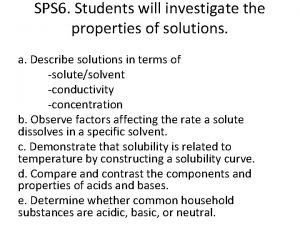Ohms Law SPS 10 Students will investigate the




























- Slides: 28

Ohm’s Law SPS 10. Students will investigate the properties of electricity and magnetism. b. Explain the flow of electrons in terms of -alternating and direct current. -the relationship among voltage, resistance and current. -simple series and parallel circuits.

Electricity: Review Electricity ◦ Moving electric charges transfer energy ◦ Movement of charges is a flow of energy ◦ Electrical energy is due to the flow of electrons ◦ When charges are unbalanced, electrons move from higher to lower potential Circuits control the flow of electric charges. Charge movement is affected by: Electric potential (measured in volts) Resistance (measured in ohms) A conductor allows an electric charge to pass through easily and has low resistance An insulator does not easily allow an electric charge to pass through and has high resistance

Electric Current Electric current ◦ Continuous flow of charge ◦ the rate at which electric charges pass through a given point The greater the flow of charge, the higher the current. Electrons move from negative to positive. Current moves from positive to negative Current is a measure of the “flow” of electrons Measured in units called amperes, or amps Symbol: A

Voltage Electrical potential The potential difference between two points in a circuit Think in terms of “electrical pressure” The “push” or “force” that causes electrons to move from negative to positive A measure of how much work is needed to move a charge between two points The amount of energy released as a charge moves between two points in the path of a current A large separation of charge creates high voltage Measured in units called volts Symbol: V

Voltage & Current The size of the current depends on the voltage. • The greater the voltage, the greater the current. • A greater current means that more charges move in the wire each second. •

Resistance The opposition to the flow of electric charges (electrons) Measure of how difficult it is for electrons to flow through a material Think of resistance as “electrical friction. ” Measured in units called ohms Symbol: Application: ◦ The longer the conductor the higher the resistance. ◦ The smaller its area the higher its resistance Longer conductors = higher resistance. Smaller conductor = higher resistance

Resistors Electrical devices which manage the flow of current through a circuit, creating a drop in voltage between two points Objects added to a circuit that restricts the flow of electrical energy. Inhibit the current by producing a voltage drop when current passes through them produces a potential difference Cause some electrical energy to be converted to thermal energy (heat). An object’s resistance depends on its material, thickness, length, and temperature

Resistance in Conductors Good conductors, such as copper, have a low resistance. However, poor conductors, such as iron, have a higher resistance. Copper - low resistance If the resistance in a material increases and the voltage across the object is constant, the current decreases. Tungsten - high resistance

Are light bulbs resistors? The filament of a light bulb isn't like a resistor . . . it is a resistor. The only difference from the ones on circuit boards is the it's designed to operate at a much higher temperature. So hot that it glows. The glass envelope is there to prevent oxygen from getting in and promptly burning it. When the filament becomes too hot it breaks breaking the current that was lighting it in the first place. That is why the light bulb "burns" out. However – when electricians talk about resistors, they are referring to special components designed to control voltage and current.

Relationship Equation: Ohm’s Law Relationship exists between voltage, current, and resistance The amount of current passing through a conductor is directly proportional to the voltage across the conductor and inversely proportional to the resistance of the conductor Voltage (V) = Current (I) x Resistance (Ω) V: potential difference (V) I: current (A) R: resistance ( )

Voltage vs. Resistance Voltage increases as Resistance increases DIRECT relationship

Voltage vs. Current • • Current increases when voltage increases DIRECT relationship

Current vs. Resistance • • Current decreases as resistances increases INVERSE relationship

Ohm’s Law Problem V I R ª A circuit contains a 6 volt battery and one light. If the current through the circuit is 3 A, what is the resistance of the light? GIVEN: WORK: V = 6 V I = 3 A R = ? V =IR R = V ÷ I R = (6 V) ÷ (3 A) R=2Ω

Ohm’s Law Problem V I R ª A light bulb with a resistance of 160 is plugged into a 120 V outlet. What is the current flowing through the bulb? GIVEN: WORK: R = 160 V = 120 V I = ? V V = IR I = V ÷ R I = (120 V) ÷ (160 ) I = 0. 75 A

Ohm’s Law Problem V I R ª A circuit has a light bulb with a resistance of 60 and a current of 2 A. What is the voltage of the energy source in this circuit? GIVEN: WORK: R = 60 I = 2 A V = ? V V =IR V = (2 A) x (60 ) V = 120 V

Ohm’s Law: Series Circuit In a series circuit: THE TOTAL RESISTANCE IS EQUAL TO THE SUM OF THE RESISTANCES. Req = R 1 + R 2 + R 3 http: //www. physicsclassroom. com/Class/circuits/u 9 l 4 c. cfm

Ohm’s Law: Series Circuit In a series circuit: ◦ Current stays the same – So the current in each resistor of a series circuit is the same as the current in the entire circuit. Itotal = I 1 = I 2 = I 3 =. . . ◦ Voltage drops as the charges move through the circuit – So the sum of the voltages across each resistor equals the total voltage. ΔVtotal = ΔV 1 + ΔV 2 + ΔV 3 +. . .

Series Circuit Problem Solve: Voltage (V): 12 Current (I): . 32 Resistance (R): 38

Series Circuit Problem – More Complex

How Parallel Circuits Work In a parallel circuit, charge divides up into separate branches such that there can be more current in one branch than there is in another. Charge does NOT pile up and begin to accumulate at any given location such that the current at one location is more than at other locations. Charge does NOT become used up by resistors in such a manner that there is less current at one location compared to another.

Ohm’s Law: Resistance in a Parallel Circuit The act of adding more resistors to a parallel circuit results in the unexpected result of having less overall resistance. See the “Physics Classroom for the Tollbooth Analogy: http: //www. physicsclassroom. com/class/circuits /u 9 l 4 b. cfm

Ohm’s Law: Equivalent Resistance The equivalent resistance of a circuit is the amount of resistance that a single resistor would need in order to equal the overall effect of the collection of resistors that are present in the circuit. For parallel circuits, the mathematical formula for computing the equivalent resistance (Req) is: 1 / Req = 1 / R 1 + 1 / R 2 + 1 / R 3 +. . . Sample Problem:

Parallel Circuit: Finding Equivalent Resistance Solve: A 5. 0Ω, 7. 0Ω, and a 12Ω resistor are placed in parallel. Solution: 1/Req = 1/R 1 + 1/R 2 + 1/R 3 1/Req = 1/5 + 1/7 + 1/12 1/Req =. 2 +. 14 +. 08 1/Req =. 42 Req = 1 /. 42 Req = 2. 38 Ω

Ohm’s Law: Current in a Parallel Circuit Current does NOT stay the same The current outside the branches is the sum of the current in the individual branches. It is still the same amount of current, only split up into more than one pathway. Itotal = I 1 + I 2 + I 3 +. . .

Ohm’s Law: Voltage in a Parallel Circuit THE SAME VOLTAGE IS PRESENT IN EACH BRANCH Voltage – the entire voltage drop across each resistor must match the battery voltage. ΔVtotal = ΔV 1 = ΔV 2 = ΔV 3 =. . .

Parallel Circuit Problem

Parallel Circuit Problem
 Https //phet.colorado.edu/en/simulation/ohms-law
Https //phet.colorado.edu/en/simulation/ohms-law Point form of ohms law
Point form of ohms law Types of circuits and ohm's law ch 7.1 answers
Types of circuits and ohm's law ch 7.1 answers Ohms law resistance
Ohms law resistance Ohm’s law states
Ohm’s law states Voltage triangle
Voltage triangle Watts ohms law
Watts ohms law Ohms law emf
Ohms law emf Derive ohms law
Derive ohms law Introduction of ohm's law
Introduction of ohm's law Ohms law worksheet
Ohms law worksheet A certain light bulb
A certain light bulb Derivation of ohm's law
Derivation of ohm's law Ley de ohm
Ley de ohm Ohm's law quiz
Ohm's law quiz Lesson 4 parameters and return make rock paper scissors
Lesson 4 parameters and return make rock paper scissors What does jocasta attempt to prove to oedipus?
What does jocasta attempt to prove to oedipus? How to calculate initial rate of reaction
How to calculate initial rate of reaction How to investigate a problem
How to investigate a problem Nzight
Nzight Investigate reflection
Investigate reflection Rizal's salute to luna and hidalgo
Rizal's salute to luna and hidalgo Newton's first law and second law and third law
Newton's first law and second law and third law Newton's first law and second law and third law
Newton's first law and second law and third law V=k/p
V=k/p P=k/v
P=k/v Ohms vs watts
Ohms vs watts Dos focos uno de 70 ohm y otro de 80 ohm
Dos focos uno de 70 ohm y otro de 80 ohm Spenningsbarriere
Spenningsbarriere
